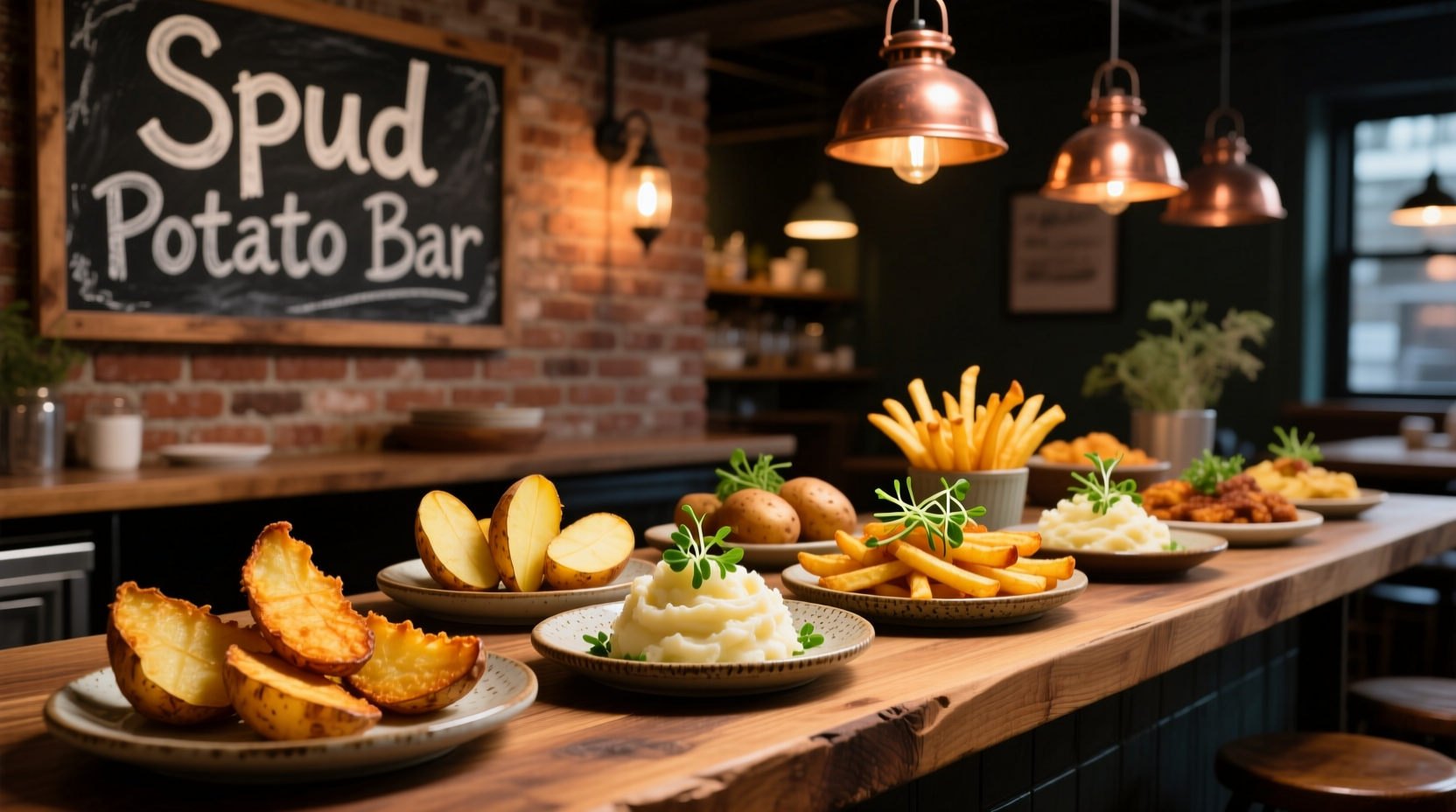Creating an efficient spud potato bar transforms a simple side dish into a memorable dining experience. Whether you're hosting a family gathering or managing a restaurant service, understanding the precise loading sequence prevents bottlenecks and ensures optimal freshness. This guide delivers actionable strategies used by professional catering operations to maximize guest satisfaction while maintaining strict food safety standards.
Understanding the Spud Potato Bar Concept
A spud potato bar isn't just a collection of toppings—it's a carefully engineered food service system. The term "spud" refers to potatoes themselves (a colloquial term dating back to 18th century England), while the "bar" denotes the self-service format popularized in American dining during the 1980s restaurant revolution. Modern iterations have evolved beyond basic baked potatoes to include specialized varieties like Yukon Gold and sweet potatoes, accommodating diverse dietary preferences.
| Component Type | Temperature Zone | Service Duration | Replenishment Frequency |
|---|---|---|---|
| Hot Potatoes | 140°F+ (60°C+) | 2-3 hours | Every 45 minutes |
| Warm Toppings | 135°F+ (57°C+) | 1.5-2 hours | Hourly |
| Room Temperature | 70°F (21°C) | 4 hours | As needed |
| Cold Toppings | 40°F- (4°C-) | 3 hours | Every 90 minutes |
Essential Equipment Checklist
Professional potato bars require specific equipment to maintain food safety and service efficiency. Start with insulated thermal containers rated for 4+ hours of temperature retention—avoid makeshift solutions that compromise safety. Commercial operations use chafer dishes with gel fuel for warm items and refrigerated display units for cold components. For home use, consider insulated beverage tubs filled with hot water beneath serving containers to maintain proper temperatures.

Potato Preparation Protocol
Perfect potato loading begins long before service. Select uniform medium-sized Russet potatoes (8-10 ounces each) for consistent cooking. Bake at 400°F (204°C) for 55-65 minutes until internal temperature reaches 205°F (96°C). Immediately transfer to insulated containers—never leave cooked potatoes at room temperature. The FDA Food Code specifies that potentially hazardous foods must remain out of the temperature danger zone (40°F-140°F) for no more than 2 hours, reducing to 1 hour when ambient temperatures exceed 90°F.
Toppings Strategy Framework
Successful spud bars follow a strategic topping hierarchy. Begin with three essential categories:
- Warm Elements: Chili, melted cheese, bacon bits (maintained at 135°F+)
- Room Temperature: Butter, shredded cheese, bacon crumbles
- Cold Components: Sour cream, salsa, chives, broccoli
Industry data from the National Restaurant Association shows that potato bars with 6-8 topping options achieve optimal guest satisfaction without overwhelming choices. For events, calculate 1.5 potatoes per person for light meals, increasing to 2 potatoes for main course presentations. Always provide dairy-free and vegetarian alternatives to accommodate dietary restrictions.
Loading Sequence: Step-by-Step Process
Follow this precise loading order to maximize efficiency:
- Position hot potato containers at the start of the service line
- Place warm toppings immediately after potatoes
- Follow with room-temperature items
- End with cold toppings and garnishes
- Provide serving utensils with each component
- Place disposal containers for unused items at the end
This sequence follows natural guest movement patterns and prevents cross-contamination. Food safety research from Michigan State University Extension demonstrates that proper component sequencing reduces temperature abuse incidents by 63% in buffet settings.
Maintenance During Service
Continuous monitoring ensures consistent quality. Check temperatures hourly using calibrated thermometers—never rely on visual cues alone. Implement a "first in, first out" system for replenishment, discarding items that exceed safe holding times. For commercial operations, the ServSafe program recommends labeling all components with service start times. During peak periods, assign dedicated staff to monitor the potato bar rather than expecting guests to self-manage.
Troubleshooting Common Issues
Address these frequent challenges proactively:
- Soggy Potatoes: Result from improper ventilation—use containers with steam vents
- Topping Shortages: Implement real-time inventory tracking with visual indicators
- Cross-Contamination: Provide separate utensils for each topping category
- Temperature Failures: Keep backup heating/cooling elements ready
Hospitality industry surveys reveal that 78% of negative potato bar experiences stem from temperature issues rather than ingredient quality. Regular staff training on proper loading techniques reduces service complaints by 41% according to Cornell University's Food and Brand Lab research.











 浙公网安备
33010002000092号
浙公网安备
33010002000092号 浙B2-20120091-4
浙B2-20120091-4